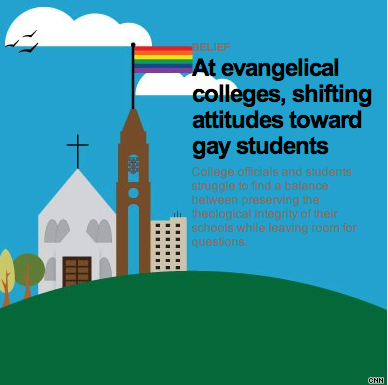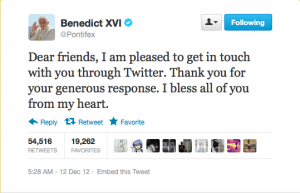What’s good for the goose is good for, um, Sarah Pulliam Bailey.
Right?
Sarah, former online editor for Christianity Today and now managing editor for Odyssey Networks, spent three years as a GetReligion contributor before leaving us this past October.
To be honest, I still haven’t forgiven Sarah for giving up her high-paying gig as a GetReligionista. How dare she abandon our close-knit team of blogging professionals?
But anyway, this tweet by Sarah caught my attention today:
At evangelical colleges, a shifting attitude toward gay students (My piece for @cnnbelief) religion.blogs.cnn.com/2013/03/30/at-…
— Sarah Pulliam Bailey (@spulliam) March 30, 2013
I tweeted back:
@spulliam I already called @getreligion dibs on that hack piece. 🙂
— Bobby Ross Jr. (@bobbyross) March 30, 2013
So here we are, with me about to treat Sarah to a big ole helping of the no-holds-barred media criticism that she doled out so often herself. (After typing that, why do I feel a sudden urge to take a break and watch some professional wrestling?)
Actually, in case you couldn’t tell, I’m delaying the inevitable part of the post where I have to say what a great journalist Sarah is and how much I enjoyed her 2,800-word story because, well, you know how much GetReligion readers hate posts that actually praise mainstream media coverage of religion.
Right?
Here’s the top of Sarah’s story:
Wheaton, Illinois (CNN)– Combing through prayer requests in a Wheaton College chapel in 2010, then-junior Benjamin Matthews decided to do something “absurdly unsafe.”
He posted a letter on a public forum bulletin board near students’ post office boxes. In the letter, he came out as gay and encouraged fellow gay Christian students — some of whom had anonymously expressed suicidal plans in a pile of the prayer requests — to contact him if they needed help.
In a student body of 2,400 undergraduates in the suburbs of Chicago, at what is sometimes called the Harvard of evangelical schools, Matthews said that 15 male students came out to him. Other students seemed somewhat ambivalent about his coming out, he said.
No one told him he was wrong or needed to change, Matthews said some students were obviously uncomfortable with someone who would come out as gay and remain a Christian.
“I don’t think most Wheaton students knew what to do because they’ve been given ‘love the sinner, hate the sin’ rhetoric, but they don’t know how that plays out in real life,” said Matthews, who graduated in 2011. “They would mostly just listen, nod and say, ‘Yeah man, that’s hard.’”
Sarah packs the report with diverse voices, relevant context and history, strong survey data and important nuance that recognizes the complex nature of the issues at play. All in all, it’s an extraordinary story, worthy of the lead spot that it occupies on CNN’s home page at the moment I type this.
If I have any criticism, it’s that the story takes too long — in my humble opinion — to quote any Wheaton officials. We’re nearly 900 words into the piece before we get to this:










